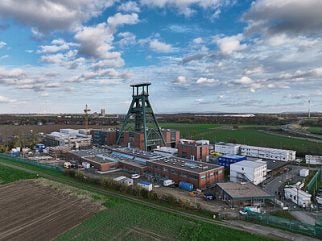
The Lower Saxony Ministry of the Environment has rejected an application from the Federation for the Environment & Nature Conservation Germany (BUND) and the Naturschutzbund Deutschland (NABU) to revoke or withdraw planning approval for Germany’s Konrad repository for low and intermediate-level radioactive waste.
The former Konrad iron ore mine in Salzgitter, Lower Saxony was closed for economic reasons in 1976 and investigations began the same year to determine whether the mine was suitable for use as a repository for low and intermediate-level radioactive waste (LLW/ILW).
In 2002, the Lower Saxony Ministry for the Environment issued planning approval for the Konrad repository and this was confirmed by the Federal Administrative Court in 2007 following multiple legal proceedings. A construction licence was then issued in January 2008.
Federal radioactive waste company, Bundesgesellschaft für Endlagerung (BGE) assumed responsibility as the operator of the Konrad repository from the Federal Office for Radiation Protection in April 2017. However, in May 2021, NABU and BUND submitted an application to withdraw or revoke the planning approval and to stop construction.
The Lower Saxony Ministry of the Environment has now dismissed the application “after intensive legal and substantive review”. BGE said this “once again confirms that the planning approval decision for the Konrad repository is legal”. It added: “BGE will continue to push ahead with the construction of the Konrad repository so that the majority of low and medium-level radioactive waste from Germany can be safely disposed of.”
Thomas Lautsch, technical director of BGE, noted: “With the planning approval decision for the Konrad repository, we have a robust basis for the construction, operation and decommissioning of the Konrad repository. The construction will take place on this basis and will also be implemented in accordance with the current technical regulations.”
The Konrad mine is already being converted for use as a repository under the supervision of BGE. The two mine shafts are being renovated and equipped with the necessary infrastructure underground. This includes transport galleries and the emplacement areas at a depth of around 850 metres. Above ground, construction work is under way on new buildings, including the reloading hall.
The final disposal of up to 303,000 cubic metres of LLW/ILW at Konrad is set to begin in the early 2030s. This represents 95% of Gemany’s waste, with 1% of the radioactivity. This waste is currently stored above-ground in interim storage facilities at more than 30 locations. At the Konrad repository, the containers will be immobilised with suitable concrete and securely sealed off during emplacement operations. Once operations are complete, the mine tunnels will be backfilled and sealed to ensure long-term safety.
However, the environmental associations can now appeal against the decision of the Lower Saxony Ministry of the Environment before the Higher Administrative Court in Lüneburg and have one month to file an action.
Researched and written by Judith Perera






